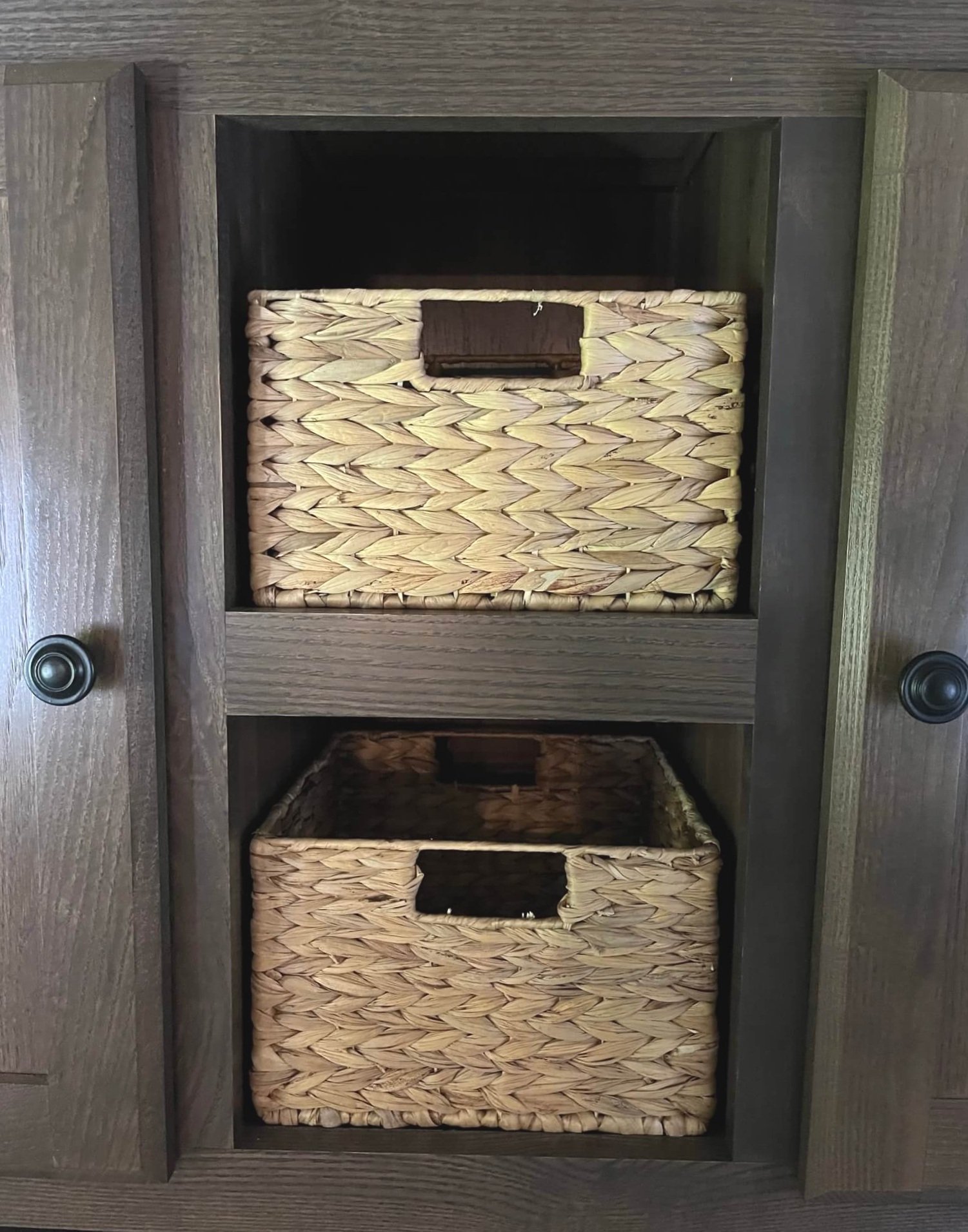How to Organize an RV
While this article is primarily geared towards those who own a trailer, camper van, mobile home or any other type of recreational vehicle (RV), anyone with a tiny home or just a small living space could certainly find it useful.
As a professional organizer, I am used to most types of projects that come my way. However, I recently had the unique opportunity to organize the Living Quarters (LQ) of my client’s Horse Trailer. The LQ space pretty much mimics your standard RV, minus the horse stalls and mid-tack.
Mid-Tack
A midtack is the place between the horse stalls and the living area of a horse trailer that is used for the storing riding equipment, also referred to as tack, such as bridles and saddles.
So what makes organizing an RV so different? To start, the storage areas are typically much smaller and more awkwardly shaped than those found in traditional homes. They can also be more shallow. Plus items can easily fall out because the vehicle moves. This makes it a bit more challenging to organize, but not impossible Here’s how to do it!
First, write a list of every item that needs to go into the space before you start organizing. Every. Single. Item. That's because you will need to pre-identify which spaces will fit which items. Especially look at larger, bulkier items like fold out tables and floor fans. You may have limited options for these. I ended up putting a camping grill in the bathroom cabinet of this LQ because it was the only space deep enough for it. If it helps, you can sketch a mockup of the internal layout to identify where you will store everything.
Measure all spaces (then measure again). Because there are often a lot of triangular and/or shallow cabinets, it is extremely important to have really accurate measurements.
Next, make use of wall space and hang anything you can. I utilized a hanging trash can, wall-mounted baskets, self-adhesive paper towel holder and a magnetic knife holder. This freed up much-needed cabinet space. I also used over-the-door hooks to hang a towel bar and self-adhesive wall hooks for jackets.
Apply a shelf liner that grips, such as Gorilla Grip Drawer Shelf Liner, for spaces where you don’t want items to easily slide. You should also note which cabinets you do not want to use it in. For example, the thin long cabinets over the couch in this project were perfect for clothes, which I stored in fabric organizer boxes. To allow my client to easily pull them in and out, I intentionally did not line these.
In retrospect, I would also suggest that you may want to use a thin double-sided tape to stabilize the liner for those cabinet bottoms where items might pull it up. This would have been ideal in the under-sink-cabinet where I put the pots and pans since they could easily get stuck to the liner and pull it out.
Research first to ensure you buy appropriate products that fit your spaces as closely as possible. If you can snuggly fit in several pieces that is the easiest way to ensure they can’t move. For example, I bought 2-3 containers per shelf for the medicine cabinet to ensure they took up the entire shelf so nothing would slide.
Secure items that can move. Even if there are doors on the cabinets, they may open in transit. I made sure whatever didn't fit in the space exactly was secured to the wall or base of the cabinet by adhesive furniture anchors. These worked perfectly! Especially for the small shelves I put in the cabinets, as well as the dishes which I stored in plate holders that I anchored to the wall.
Finally, consider buying some extra sturdy, thick double-sided tape to keep in your RV since some self-adhesive items that are frequently pulled on, (like a paper towel holder) may at some point fall off.
To recap:
Write a list
Measure all spaces
Make use of wall space
Apply a shelf liner that grips (where needed)
Research first to ensure you buy appropriate products
Secure items that can move
That’s it. Now you have a functional and safe space for your next trip!
LQ Horse Trailer









